Building Niche E-commerce Sites Using WordPress Framework: Technical Overview
In the open-source ecosystem for building niche or second-layer custom e-commerce websites, commonly used frameworks include OpenCart, Magento, and the WordPress (WP) framework. On the other hand, ZenCart is considered a legacy platform and is generally no longer recommended due to its outdated architecture and limited scalability.
Today, our focus is on WordPress, providing a high-level overview to help developers understand its internal logic and structure. If you’re considering using WordPress to build a niche commerce site, the combination of WordPress 5.7.2 + WooCommerce is widely adopted. The core infrastructure typically adopts an AB+ dual-server framework. In the payment processing link, advanced techniques such as entry point cloaking, IP filtering, and anti-bot detection are implemented. For high-volume transactions, additional risk control strategies like dynamic weight distribution, transaction amount variation, and randomized routing are used to ensure payment stability and compliance.

Although the startup process of WordPress is a very tedious and complicated process, it is essentially a process started by a series of Hook hooks. We do not need to care about the complex logical relationship. We only need to know the execution order of the hooks, at which stage to load the plug-in API, at which stage to generate user credit information, etc.
The startup process before SHORTINIT
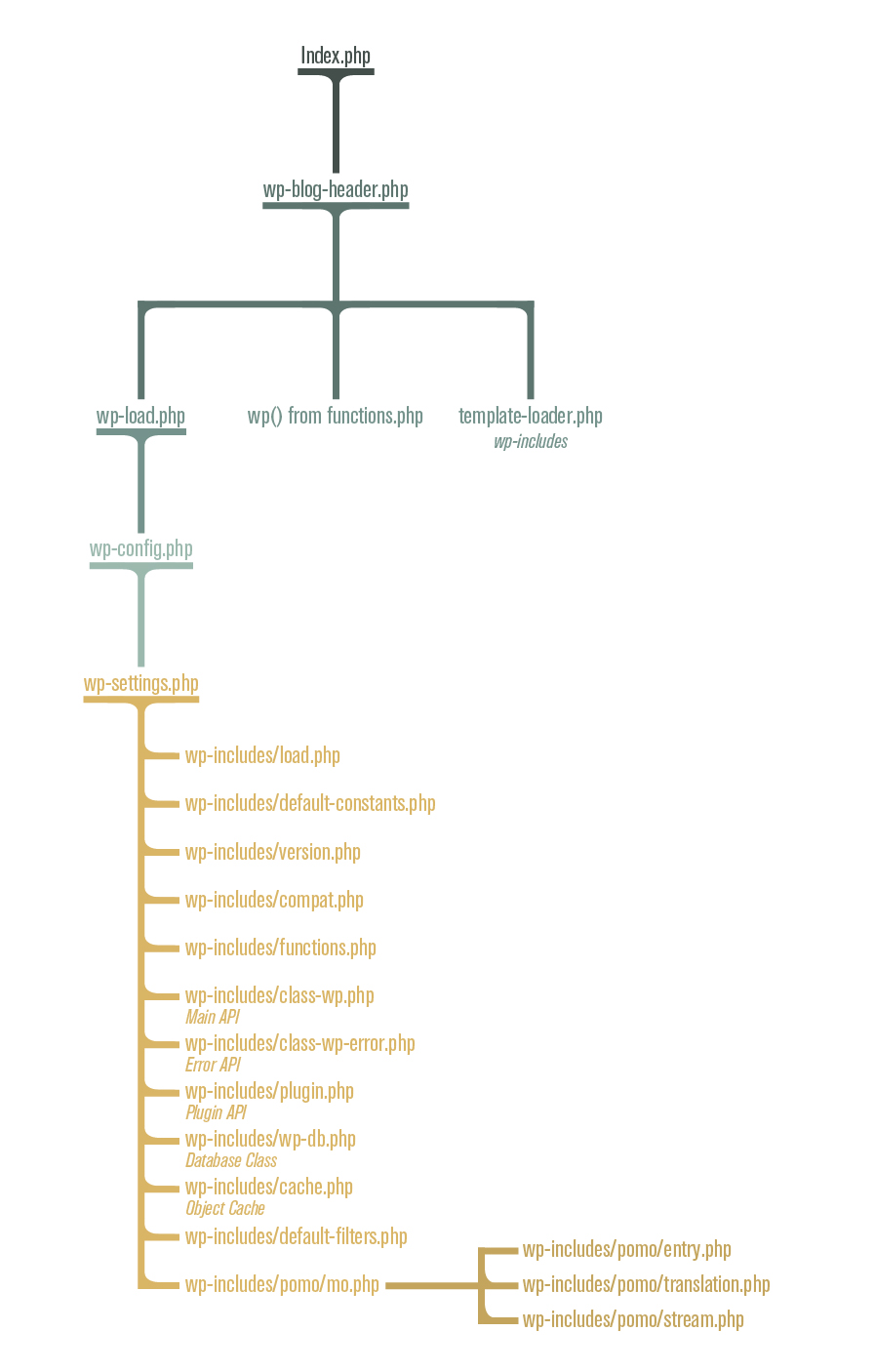
WordPress-hook execution order
WordPress responds to index.php requests after SHORTINIT test fails and continues to start
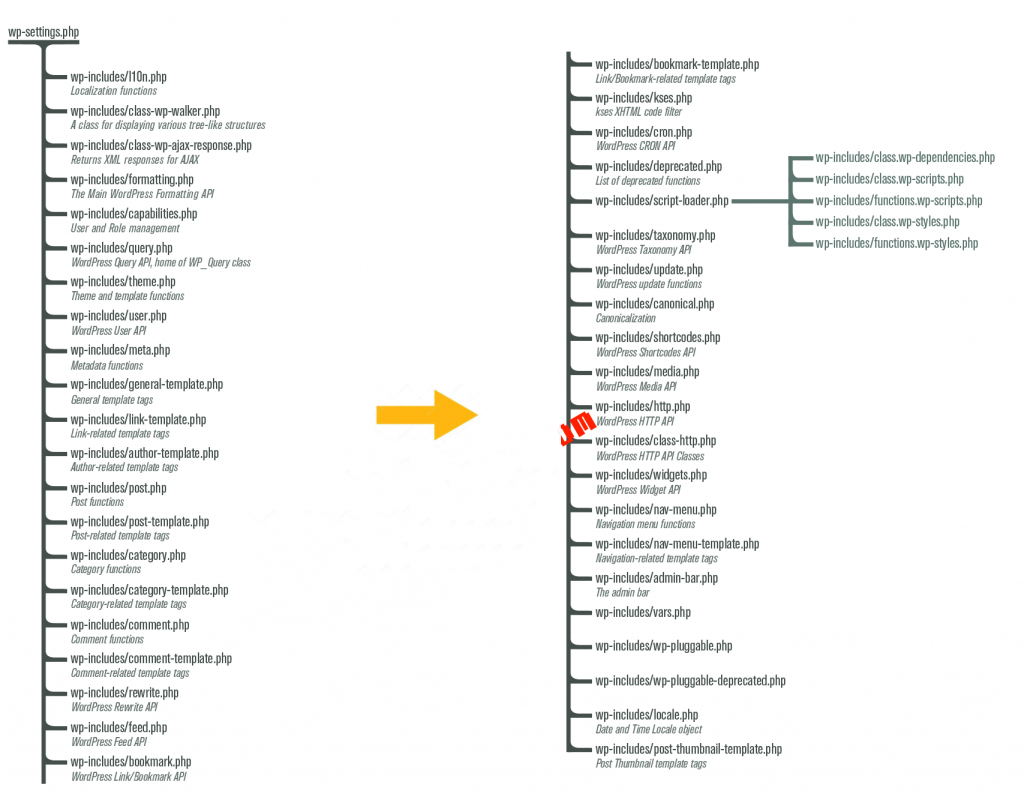
WordPress wp() function
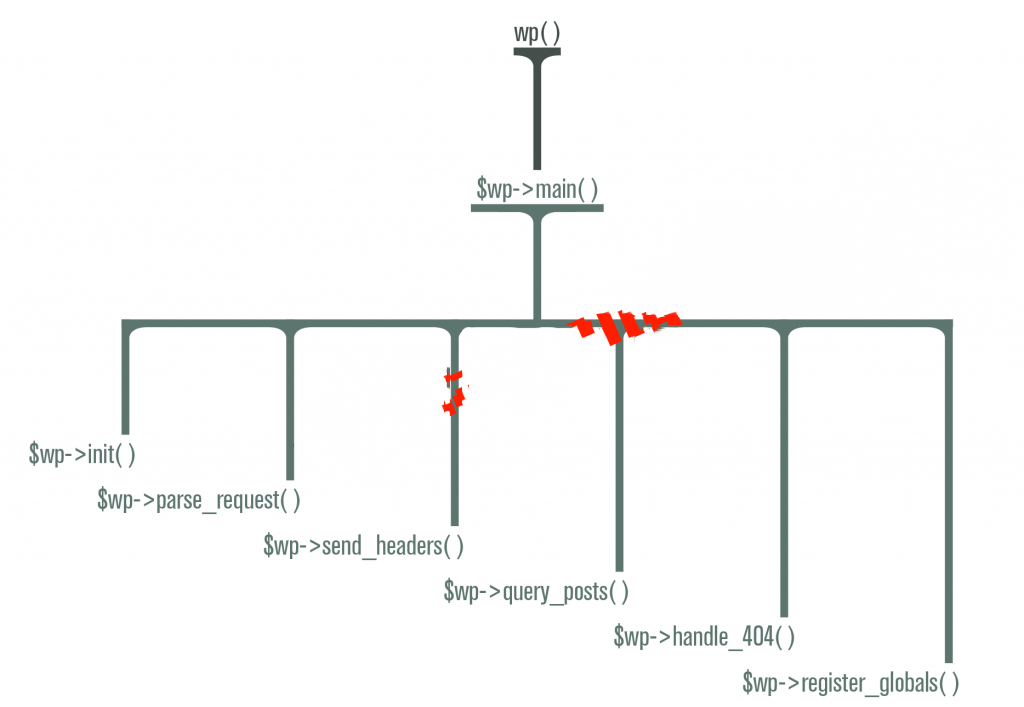
Next, let’s take a look at the code structure of WordPress and the calling relationship between modules:
After the program is deployed, open ftp, and the code distribution is as follows:

wp-admin: wordpress site backend module,
wp-content: wordpress themes, plugins and localized storage directory,
wp-includes: wordpress some class and public function file storage directory,
index.php in the root directory is the entry module for most wordpress functions.
The calling relationship is as shown below:

The above process mainly includes three parts: global initialization, data reading and template rendering. Among them,
wp-load.php makes a series of function calls, defines global variables, and references necessary php files;
wp() functions mainly call class methods in wp-include/class-wp.php to implement different request preprocessing, and then load the corresponding data into the global object for subsequent template page display;
template-loader.php implements loading different templates according to different url parameters,
and the template loading process is as follows:
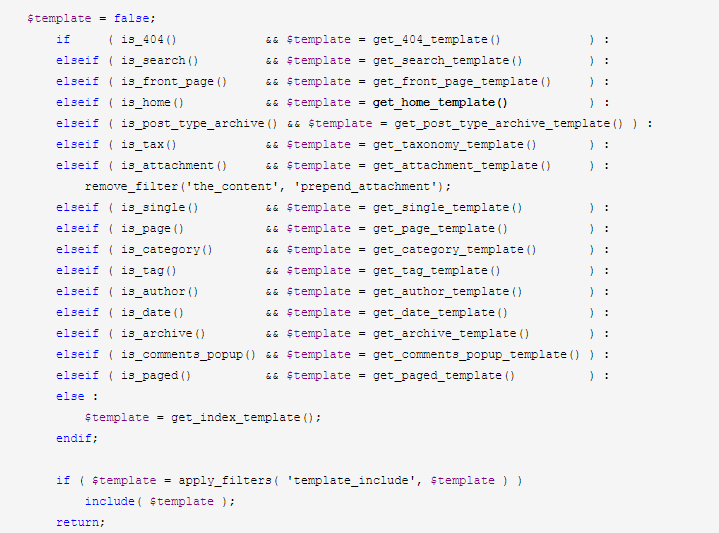
The above code clearly shows that the program loads different template PHP files according to different page types.
The get_query_template function obtains the template file path of the specified type. You can enter the function and view its implemented functions, as shown below:
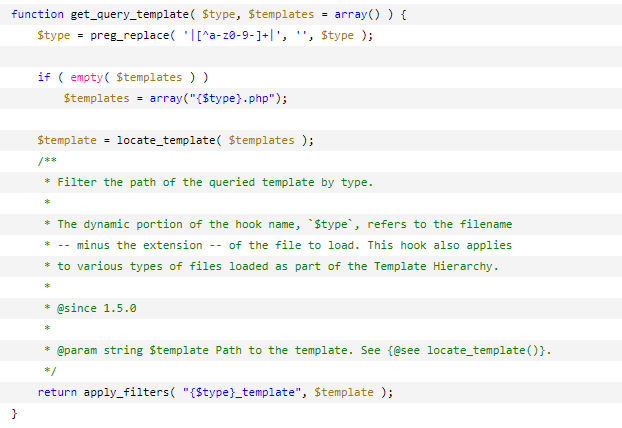
The locate_template function determines whether the corresponding template exists. If it exists, it loads it. Otherwise, it returns the path of the template file. You can also enter the function to view its implemented functions, as shown below:

In summary, we clearly know that these functions are mainly used to select which template, how to get the template path, and display the loading process. With these cognitive foundations, we are very clear about the URLs of different parameters, template selection, and the PHP file process under the template.
The A-station server of the WordPress imitation website is also based on this set of hook sequence process and source code structure to start the mall business logic development, and then equipped with payment collection and in-site self-cloak technology, a complete site is developed.





